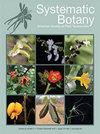综合现有系统发育资料推进龙胆科系统发育研究
IF 0.8
3区 生物学
Q4 EVOLUTIONARY BIOLOGY
引用次数: 2
摘要
摘要到目前为止,还没有对列当科进行全面的系统发育分析,包括广泛的属采样和大量的物种采样。此外,由于分支中缺乏化石证据,无法使用原始化石校准来估计分歧时间,从而无法建立用于宏观进化研究的综合时间框架。在这里,我们使用最近开发的一套工具来合成公开可用的数据,将这些数据应用于重建列当科的综合时间树,然后使用两种基于模型的方法研究这个主要寄生植物分支的多样化动态。组装的超级雌蛛包括900多个物种,约占该科已知物种多样性的40%,由此产生的系统发育在很大程度上证实了早期研究中揭示的关系;然而,我们确定了10个非单系属,这些属需要集中的系统关注才能解决。多样化率分析发现,半寄生分支的多样化率较高,这有力地支持了性状依赖性多样化,并有证据表明整个树木的物种形成率发生了许多变化,这些变化可能与其他性状有关。重要的是,我们的多状态HiSSE(隐藏状态特殊化和灭绝)分析表明,只有在先前未观察到的前体状态发生转变时,才会发生向寄生生活方式的转变。对于列当科,我们的研究为该分支提供了一个新的综合框架,可以作为未来宏观进化研究的垫脚石。本文章由计算机程序翻译,如有差异,请以英文原文为准。
Synthesizing Existing Phylogenetic Data to Advance Phylogenetic Research in Orobanchaceae
Abstract To date, no comprehensive phylogenetic analyses have been conducted in Orobanchaceae that include both a wide sampling of genera and a large sampling of species. In addition, a lack of fossil evidence in the clade precludes the use of primary fossil calibrations for divergence time estimation, preventing the establishment of a comprehensive temporal framework for use in macroevolutionary studies. Here, we use a recently developed set of tools for synthesizing publicly available data, apply these to reconstruct a comprehensive timetree for Orobanchaceae, and then investigate diversification dynamics in this clade of mostly parasitic plants using two model based methods. The assembled supermatrix included more than 900 species, representing approximately 40% of the known species diversity of the family, and the resulting phylogeny largely confirmed relationships revealed in earlier studies; however, we identified ten non-monophyletic genera that will require focused systematic attention to resolve. Diversification rate analyses found substantial support for character-dependent diversification, with elevated rates in hemiparasitic clades, and evidence for a number of speciation rate changes throughout the tree that are likely linked to other traits. Importantly, our multi-state HiSSE (Hidden State Speciation and Extinction) analysis revealed that transitions to a parasitic lifestyle only occur when there is a prior transition in an unobserved precursor state. For Orobanchaceae, our study provides a new comprehensive framework for the clade that can serve as a stepping-stone for future macroevolutionary studies.
求助全文
通过发布文献求助,成功后即可免费获取论文全文。
去求助
来源期刊

Systematic Botany
生物-进化生物学
CiteScore
1.80
自引率
10.00%
发文量
72
审稿时长
6-12 weeks
期刊介绍:
Systematic Botany Monographs is a series of peer-reviewed taxonomic monographs and revisions published the American Society of Plant Taxonomists. ISSN 0737-8211, ISBN prefix 978-0-912861. No; volumes of Systematic Botany Monographs must be ordered separately. ASPT membership inludes only a subscription to the quarterly journal Systematic Botany. SBM is supported by sales, author"s subsidies, and donations.
 求助内容:
求助内容: 应助结果提醒方式:
应助结果提醒方式:


